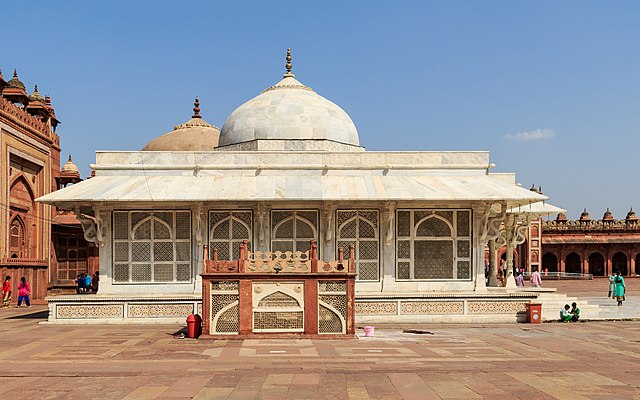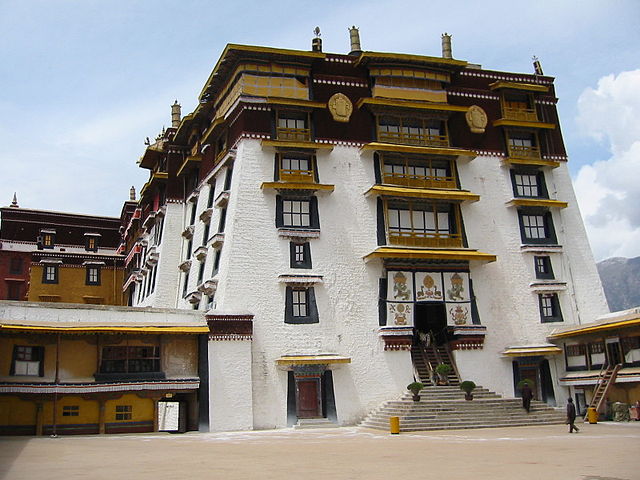A chhajja is an overhanging eave or roof covering found in Indian architecture. It is characterised with large support brackets with different artistic designs. Variation is also seen in its size depending on the importance of the building on which it features or the choice of the designer.
The tomb of Salim Chishti in Fatehpur Sikri (India) exhibiting a deep chhajja following the perimeter of the building supported with elaborate brackets
In architecture, an overhang is a protruding structure that may provide protection for lower levels. Overhangs on two sides of Pennsylvania Dutch barns protect doors, windows, and other lower-level structures. Overhangs on all four sides of barns and larger, older farmhouses are common in Swiss architecture. An overhanging eave is the edge of a roof, protruding outwards from the side of the building, generally to provide weather protection.
Overhang on 16th century Tomb of Salim Chishti, Fatehpur Sikri, India
Overhangs on the White Palace in the Potala Palace complex—an example of Tibetan architecture from 1649.
A contemporary home in Glen Ellen California exemplifying the practice of Indoor-Outdoor Living design through an elongated overhang. Builder: Stillwater Dwellings.
15th century timber-framed houses with overhanging jetties in Thaxted, England.





